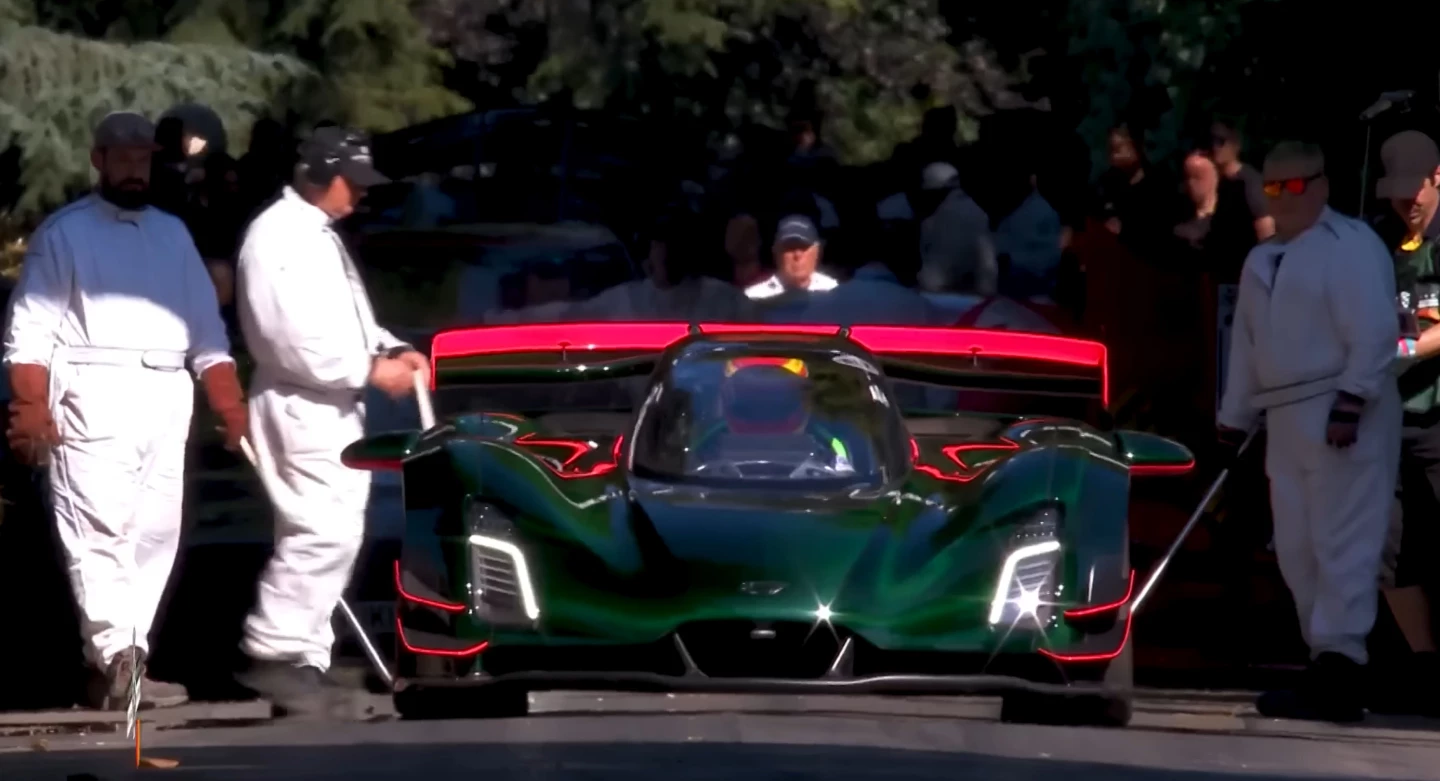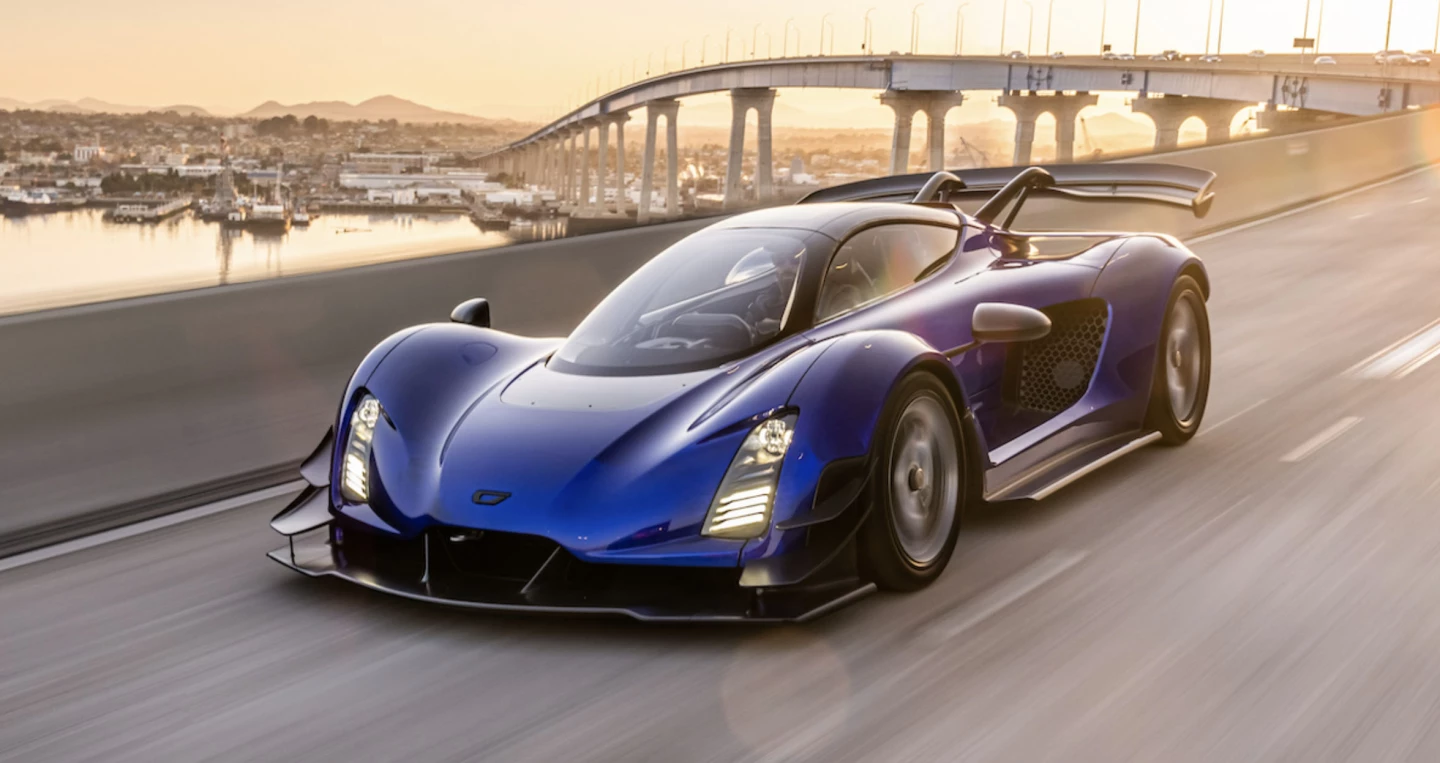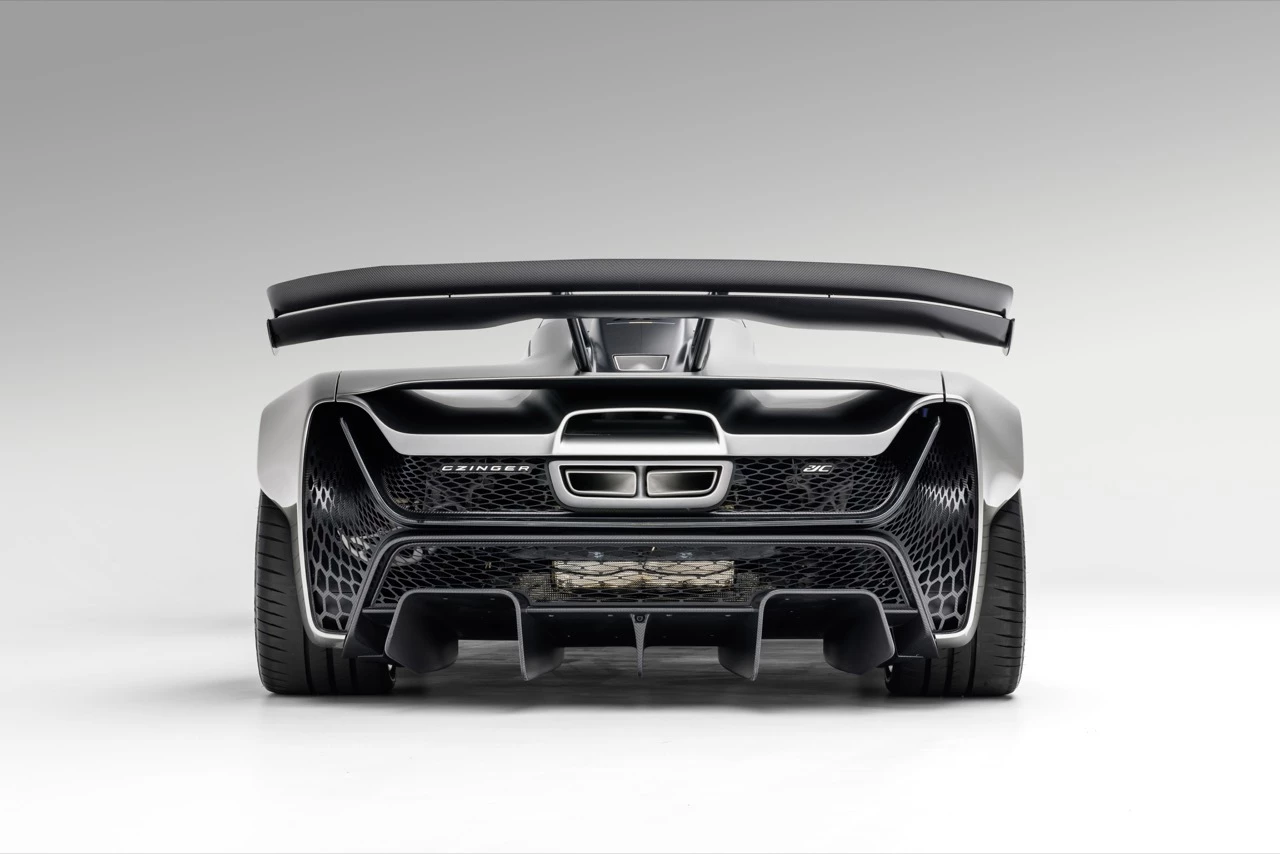With driver Chris Ward in the captain's chair, the Czinger 21C clocked in a 48.83-second run with 3rd through 6th place all separated by less than 0.9 of a second. The overall winner was the Ford Supervan 4.2 (you should use the word "van" loosely) with a 43.98-second go.
This isn't the first time the Czinger 21C has been in New Atlas record-holding headlines. Back in 2021, driver Joel Miller lapped the famed racing circuit Laguna Seca in Monterey, CA for a record time of 1:25:44, beating Randy Probst's 2019 McLaren Senna time by a smidge over two seconds.
There are a few interesting things you should know about the Czinger 21C that make it particularly cool:
It has a fighter plane seating position, offering "room for two" but with two inline seats. This is not unlike the arrangement in an F-16B Fighting Falcon, putting the single passenger directly behind the driver, letting them feel all the stomach-churning cornering and speed G-forces but without all the fuss of being able to see out the window. As long as the driver is under 5 ft (152 cm) tall, there's plenty of leg room in the back for your average toddler.

Providing those bubbly-tummy G's is a modest 2.88-liter twin-turbo V8 that revs up to a conrod-torturing 11,000 rpm, giving it a healthy 950 hp (708 kW) and 550 lb-ft (746 nm) of wheel-spinning torque to the rear axle. Not to mention the two electric motors that add 150 hp (112 kW) each, putting the ZING in Czinger at a whopping 1,250 hp (932 kW) in a car that only weighs 2,760 lb (1,250 kg).
That's Formula 1 power-to-weight territory. By the way, the company does offer a 1,350 hp (1,007 kW) option as well, should the 1,250 hp not feel sufficient.

The 21C uses a 7-speed sequential gearbox, similar to what you'd find in a sport bike or a WRC rally car, but with an extra gear to hit that 219-mph (352-km/h) top speed.
Czinger has only been around for the last five years. It's based entirely in Los Angeles, CA, from the design process to manufacturing. What's particularly interesting is that it's a 3D-printed machine, using an "in-house invented Human‑AI production system" and "printed on novel additive manufacturing machines where it is materialized in patented alloys."

According to Czinger's website, "Every component of the 21C’s structure is Pareto optimized for its precise function, not a single gram of material goes to waste." Pareto's 80/20 rule states that 80% of effects come from 20% of causes.
Father and son team Kevin and Lukas Czinger intend to build 80 of these magnificent machines with a price tag of about US$2 million a pop.
Check out the record-setting run below.
Source: Czinger












